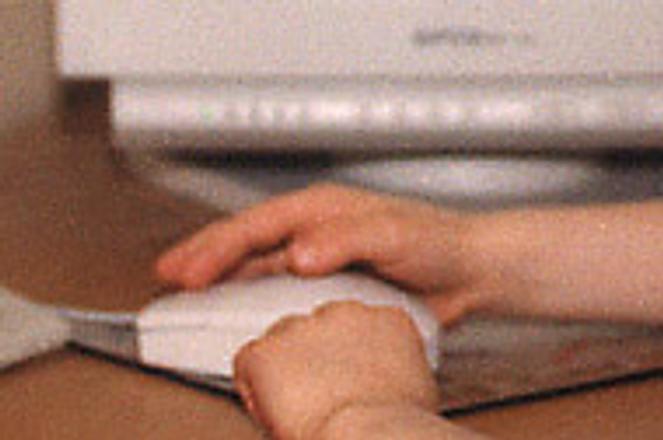Educators are hoping most Slovak students will participate in distance learning courses within five years.photo: Ján Svrček
During Katarína Dudáková's stay in 1995 at an American High School, she was stunned by how little most Americans knew about Slovakia. She was asked if Slovakia had running water, if Slovaks had regular access to showers, if they had television.
Now Dudáková is a college student participating in a class in which Slovaks and Americans share detailed information about their countries' economies and cultures.
Dudáková and another 22 students on a City University Trenčín (CUT) marketing course use the Internet to discuss marketing, advertising and retail conditions with students from Washington State University. Posting questions and answers on a web site called Blackboard.com, they work together on case studies and evaluate each others' final results.
"Distance learning really breaks down barriers," says CUT instructor Eric Peterson. "Students can talk about global business issues all day, but until they communicate directly, it doesn't sink in.
"These type of programmes are becoming very popular in the United States, and I think they should be something Slovakia moves towards."
The six-week course, devised last summer by Peterson and Robert Lupton, a former City University Trenčín professor teaching at Washington State University, requires students to trade information on topics from health care, hospitality and television, to cigarette ads, disposable income and the manners of shop clerks.
Peterson and Lupton say that Slovak students have used the project to learn about the American economy to a degree that would not have been possible with a traditional student-lecturer approach.
"They have embraced the marketing concept with depth and passion," said Lupton. "They ask in-depth questions and provide comprehensive answers."
Slovak students have also enjoyed dispelling myths about their country. "Some American textbooks still have Slovakia as part of Czechoslovakia," said Dudaková. "The programme gives Americans a chance to know us better."
CUT officials say that they will likely expand the use of Internet programmes at their school. "Other instructors are taking on-line courses," said CUT vice-dean Scott Mason. "The administration has identified distance learning as a new partner in education."
So far, Slovak educators say that a lack of Internet access and IT-savvy teachers has limited implementation of distance learning projects, such as CUT's, into a Slovak educational system where only 14% of high schools and 1% of primary schools have access to the world wide web. If nothing changes, they say, the next generation of Slovak students will be at a disadvantage to their foreign counterparts.
"As far as I know, only three distance learning courses exist in Slovakia, each at university level," said Beáta Brestenská, co-founder of Project Infovek, a non-profit organisation set up in 1998 with the goal of connecting every school in Slovakia to the Internet by the year 2005.
But while those programmes are exceptions in Slovakia, other countries have made distance learning part of their education policies.
"The British government has set a goal of having every pupil participate in an international [learning] project before the age of 11," said Viera Blahová of the National Institute for Education. "But because there are poor conditions for distance learning in Slovakia, that idea has not made its way into our curriculum."
Brestenská added, though, that Infovek was working towards solving the problem: "Our biggest obstacle right now is finding people who are able to create educational content on the Internet. Next year, Infovek will begin training teachers on implementing distance learning programmes. There is interest from teachers and students, and we realise how important it is for Slovakia to begin this type of education. In five to ten years' time, distance learning should be a regular part of Slovak high school education."


